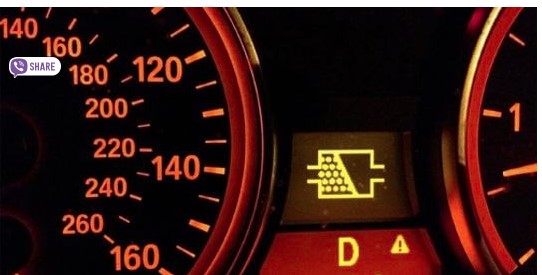Why is my DPF light on? (Diesel driver should know)

1.Why is my DPF light on?
A flashing DPF warning light does not always mean a problem with a vehicle’s DPF. Many different vehicle issues can trigger it. Such as a faulty temperature or pressure sensor. But the most common reason for a DPF warning light to appear is because of a blocked DPF. Diesel cars fitted DPF since 2009. DPF reduced the amount of soot released through the car’s exhaust system. It’s helpful lowering emissions. This soot is harmful and can cause respiratory problems.
Although having a DPF in your vehicle can help to reduce the amount of soot emanating from your exhaust. While blocked, DPF warning light will be on and become illuminated on your dashboard
2. What causes a blocked DPF?
Usually, DPF can regenerate by reaching a enough temperature to burn off the excess soot. Each vehicle will have a different regeneration cycle time. You should be able to find information on this in your vehicle’s manual. It requires driving the vehicle on a motorway produce enough heat for a succecssful regeneration .
If you only drive at low speeds, this regeneration cycle may not have the opportunity to complete and as a result, the DPF will become blocked.
3.What do you do when you see the DPF light on?
What most drivers do not know is that when the DPF light has become illuminated. It’s telling you that ‘passive regeneration’ has failed and that you need to actively regenerate the DPF.
You can do this by increasing speed to more than 40mph for between 10 and 15 minutes. This should allow the exhaust to reach sufficiently high temperatures to burn the soot and clear the filter.
During the regeneration, you may notice that engine making an unusual noise, a slightly pungent smell coming from the exhaust, and an increase in your fuel consumption. This should all return to normal once the active regeneration process has completed. You should also see the DPF light go out.
If you cannot maintain a speed to allow the regeneration process to complete, the soot will continue to build up in your filter. our DPF warning light will remain on until you have the problem fixed
4.Should I call the RAC if the diesel particulate filter light is on?
There is no need to call out the RAC if your DPF warning light is on.
As mentioned, it can sometimes be rectified by going on a long drive; if it fails to extinguish, take your car to a garage.
Remember, orange warning lights are advisory. It’s red warning lights is required immediate attention and usually demand you stop the car as soon as possibly
5.Can I ignore the DPF light and keep on driving?
In theory, it’s OK, but Kingkar doesn’t recommend it. If you continue driving, the build-up of soot will soon reach a point whereby your car has to enter ‘limp-home’ mode which is prevent any damage to the engine.
It will result in other warning lights becoming illuminated, advising you to take your car to your local garage for diagnosis.
Your garage should be able to perform a forced DPF regeneration, which should clear the filter and allow it to function properly once more. However, it’s not a guaranteed fix, especially if the filter itself has become damaged or another damage has been done to the engine. More serious repairs could run into the thousands, depending on the damage and the vehicle.
It really isn’t worth ignoring the DPF light.
6.Can DPF problems be avoided?
Reach speeds to passive and active regenerations, reducing the likelihood of having any problems with the DPF
What’s more, a professional clean is not only cheaper and faster than a replacement, but it can solve the majority of DPF-related issues.
For more information about DPF, welcome visit at www.kingkardpf.com
